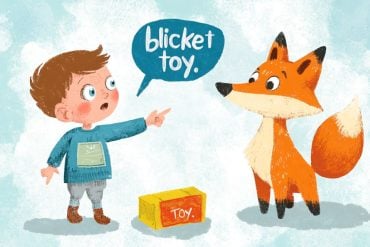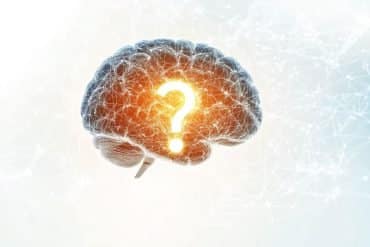Summary: People can learn to use the non-conscious content in their brains to make profitable decisions. Findings suggest a novel form of non-conscious metacognition.
Source: ATR Brain Information Communications Research Laboratory Group
We are conscious beings, yet most of the activity in our brains remains nonconscious. Can we harness this hidden pool of information? Notably, one important challenge is the astronomical vastness and complexity of such nonconscious information. How can the human brain ‘know’ what aspects of such complex activity may be relevant, given that it is by definition nonconscious and thereby ‘unknown’? There is no magic formula to solve this problem, and research in artificial intelligence suggests that even the best of our current algorithms struggle to handle this vastness of dimensionality in everyday, real-life problems.
The international team used a state-of-the-art method to read nonconscious brain states in real-time. This technique used brain scanning to monitor and detect the occurrence of specific complex patterns of activity, that were then used to determine the optimal answer to a simple action selection. In the learning sessions, participants received a small monetary reward if they selected the correct option, which was determined based on their nonconscious brain activity. This experiment allowed researchers to show how participants can learn to use the nonconscious contents of their mind to make profitable decisions. Interestingly, although based on their self-reports, participants were not aware of the learning, when they were confident in their choices, they were also more likely to be correct and receive a reward. This suggests an unexpected form of nonconscious metacognition; the participants were not aware of learning per se, but somehow, some brain mechanisms must ‘know’. These striking results illustrate the incredible power of the nonconscious mind and how important our feeling of confidence may be in our everyday life.
Dr. Aurelio Cortese, Senior Researcher at the Advanced Telecommunications Research Institute International, Kyoto, led the research:
“Strikingly, participants were taught to make rational choices on their own nonconscious brain activity through a very simple trial-and-error learning procedure. The extent of this learning was predicted by participants’ ability to self-introspect in their decisions. Such approaches may be used in the future to improve ‘dormant’ skills”.
Dr. Hakwan Lau, Professor in the UCLA Psychology Department, a co-author on the study and a leading expert in confidence and metacognition:
“This study is unique in its kind in that it shows, for the first time, the depth of the human brain’s ability to reconfigure and learn in conditions we would have thought as impossible until recently. The fact that confidence seemed to support participant’s ability to learn the task nonconsciously opens new questions on its function and role in guiding behaviour”.

Dr. Mitsuo Kawato, Director of the Computational Neuroscience Laboratories at ATR, Kyoto, was the senior author on the study, and has pioneered the state-of-the-art technology that led to the inception of this study. He explained:
“One of the most challenging questions in modern neuroscience and artificial intelligence is how can the brain solve the ‘curse of dimensionality’. There are billions of neurons in the brain, and most of its activity is complex and nonconscious. How to efficiently make the best decisions when time and experience are generally so limited? Here we provide a first indication by showing that our feeling of confidence may be part of the answer”.
The sample size was relatively small (18 people), but carried over 3 sessions, making the total (54 neuroimaging sessions) in line with basic science investigations of similar kinds.
About this neuroscience research article
Source:
ATR Brain Information Communications Research Laboratory Group
Contacts:
April Toler – ATR Brain Information Communications Research Laboratory Group
Image Source:
The image is in the public domain.
Original Research: Open access
“Unconscious reinforcement learning of hidden brain states supported by confidence” by Aurelio Cortese, Hakwan Lau & Mitsuo Kawato. Nature Communications.
Abstract
Unconscious reinforcement learning of hidden brain states supported by confidence
Can humans be trained to make strategic use of latent representations in their own brains? We investigate how human subjects can derive reward-maximizing choices from intrinsic high-dimensional information represented stochastically in neural activity. Reward contingencies are defined in real-time by fMRI multivoxel patterns; optimal action policies thereby depend on multidimensional brain activity taking place below the threshold of consciousness, by design. We find that subjects can solve the task within two hundred trials and errors, as their reinforcement learning processes interact with metacognitive functions (quantified as the meaningfulness of their decision confidence). Computational modelling and multivariate analyses identify a frontostriatal neural mechanism by which the brain may untangle the ‘curse of dimensionality’: synchronization of confidence representations in prefrontal cortex with reward prediction errors in basal ganglia support exploration of latent task representations. These results may provide an alternative starting point for future investigations into unconscious learning and functions of metacognition.







